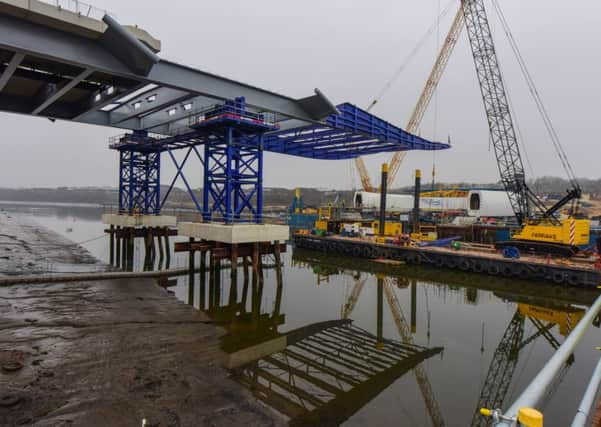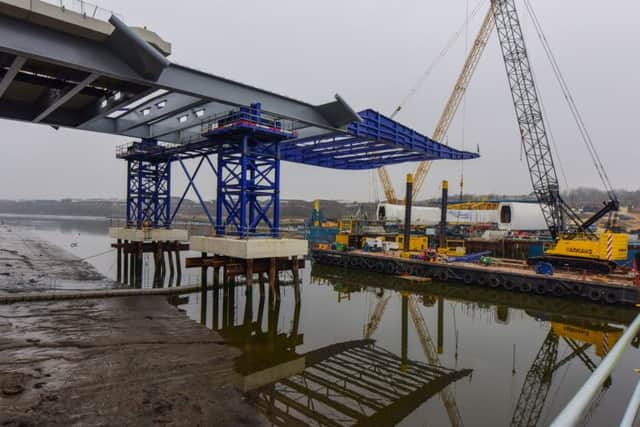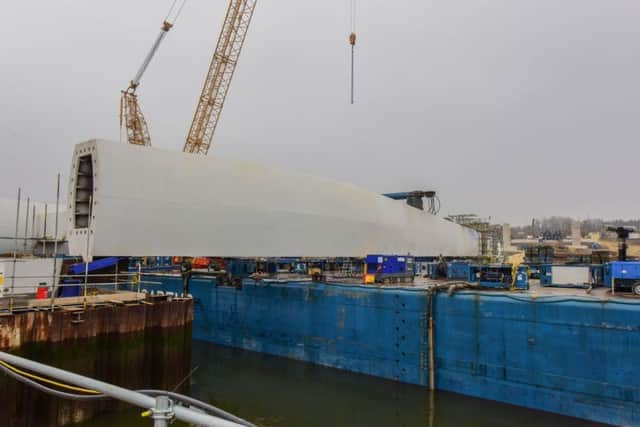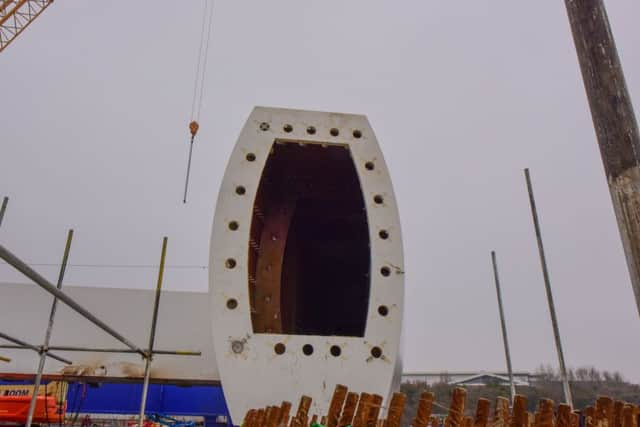Pylon will soon be raised on new Sunderland bridge as New Wear Crossing project runs perfectly to schedule


Final preparations are under way before the massive central pylon is raised into place.
Stephen McCaffery is project director for FVB joint venture, formed by Farrans Construction and Victor Buyck Steel Construction to build the bridge, and the man in charge on the site.


Advertisement
Hide AdAdvertisement
Hide AdHe said the scheme was right on schedule: “We are pretty much spot-on with where we expected to be,” he said.
“The pylon arrived in January, which we expected, and we are on course to lift it into place at the beginning of February, which is pretty much when we had planned for things to happen.”
Since arriving on-site, the pylon has been rotated through 90 degrees and is now being attached to massive temporary hinges which will swing it into place on top of two massive concrete ‘tusks’ which have been erected in the river.
The 1,500-tonne pylon - 1,000 tonnes of steel and 500 of concrete - will be bolted into place before the cables used to lift it are removed, then steel bars pulled up through the base of the legs and encased in concrete to secure it for its intended 120-year life span.


Advertisement
Hide AdAdvertisement
Hide AdThe decision on when to move the pylon up the river was mainly determined by the tide, but now the pylon is secure in place, that is no longer a concern. It is hoped to carry out the work within the next couple of weeks, but no date has yet been set.
“The pylon is independent of the tide, but we are now at the mercy of the weather,” said Stephen.
“Wind is the main problem, rain would be less so. I think fog would be a problem as well.”
The process is expected to take a little over 24 hours and will both begin and end in daylight.


Advertisement
Hide AdAdvertisement
Hide AdThe lifting will be monitored constantly, to make sure the pylon is doing what is expected of it at every stage.
“We will have a very clear picture of what is happening to make sure the pylon is lifting and rotating in the way we want it to,” said Stephen.
“We have put a lot of preparation and planning into erecting the pylon and there are a lot of measurements we will be taking as the pylon is being lifted, which we will be comparing against what we have prepared.”
A team of around 25 people will be directly involved in lifting the pylon, with as many again in support.